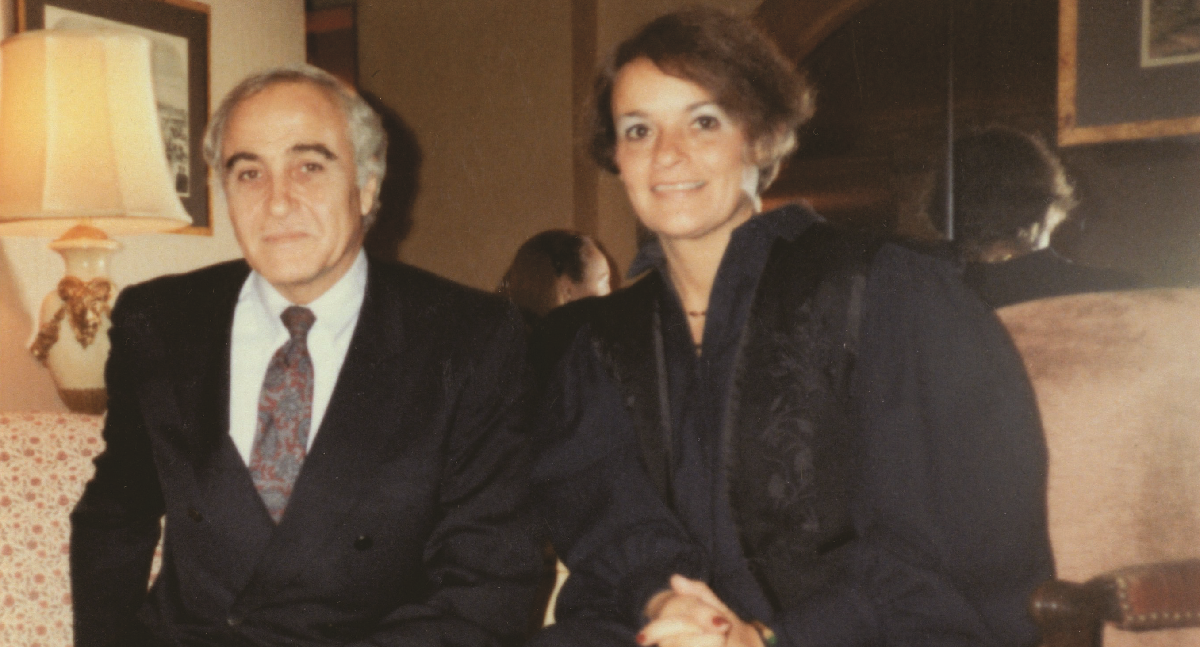
Dr. Marilyn Jenkins-Madina: Supporting “one of the few things that no one can take away from you”
June 19, 2024
Dr. Marilyn Jenkins-Madina has made a bequest to AUB to endow both an undergraduate scholarship and a graduate fellowship in the humanities, each benefiting a Syrian or Palestinian student, in the name of her late husband Professor Maan Z. Madina, a student at International College from 1939 to 1944 and at AUB from 1944 to 1947. “It is a pleasure for me to commemorate Maan’s long and happy association with AUB in this way. We both felt strongly that it is so important to support education, which is one of the few things that no one can take away from you.” Commenting on the bequest, Associate Vice President Patrick O’Connell said, “We are deeply grateful to Dr. Jenkins-Madina for her generous bequest in memory of her late husband, Professor Maan Z. Madina, which will benefit future generations of students at our university.”
Professor Madina features prominently in Jenkins-Madina’s recently published memoir, The Lure of the East: A Curator’s Fascinating Journey, which traces her extraordinary journey from a child growing up in New Jersey to a curator of Islamic art at The Metropolitan Museum of Art. The book also includes fascinating insights into what is involved in organizing permanent installations of Islamic art as well as smaller, temporary exhibitions of that art, which is something that Jenkins-Madina did on multiple occasions and at venues around the world during her 40 plus years at The Met.
Jenkins-Madina says she was introduced to the pyramids in a 6th grade history class. “I just fell in love with the pyramids, as some kids do at that age,” she remembers. “Most people get over the pyramids. I never did.”
When the time came to go to college, she wanted to be an Egyptologist. She applied to and was accepted at Brown University, which was then – and is still – the only university in the US that offers an undergraduate degree in Egyptology. “I was the only student majoring in Egyptology at the time and there were three full-time professors. It was wonderful,” she says.
After graduating from Brown in the spring of 1962, Jenkins-Madina set her sights on The Metropolitan Museum of Art – hoping to work in the Egyptian Department there. Having only a BA at the time, she was turned down for the job she wanted. Later that summer, however, she was offered the job as a clerk typist in the Islamic section of the Near Eastern Art Department which she accepted after having been advised to do so by her father. “He told me at the time that ‘a foot in the door is better than no foot at all’– and he was right,” she says.
During her first few months in that job when everyone else in the Islamic section of the department was away, an unexpected development presented itself, one which allowed her to show both the director of the museum as well as the head of her department, Charles K. Wilkinson, that she was able to rise to the occasion and solve the large problem which was presented to her by the director. This resulted in Wilkinson telling her that he would hire her back on the lowest rung of the curatorial ladder if she got a master’s degree in Islamic art – an offer that caused her to enroll in the master’s program in that field at Columbia University. While she was a student at Columbia, she met Professor Maan Z. Madina. Although they “bonded immediately,” it wasn’t until 1978, 12 years later, after serendipitously finding themselves sitting next to each other at an auction at Sotheby’s PB 84, that they became life partners. “We never could figure out why we had not run into each other during those 12 years, since he very often visited the Islamic galleries at The Met, which was where I was working and we very often would attend the same auctions of Islamic art in the city,” she says. It was also in 1978 that Jenkins-Madina earned her PhD at the Institute of Fine Arts of New York University.
Madina grew up in a large Kurdish family in Damascus. After spending his first three undergraduate years at AUB, he segued to the US and finished his BA at Utah State University. He then attended the University of Chicago where he earned both his MA (1949) and PhD (1957). He spent his entire academic career in the Department of Middle East and Asian Languages and Cultures at Columbia University, beginning there in 1958 and retiring as professor emeritus 40 years later. A celebrated historian, he was also a noted collector of Islamic art. Jenkins-Madina writes in her book about some of the many trips they took together, their numerous collaborations, and their “treasure hunting” – another passion that they shared.
One of the recurring themes in her book is the importance of “rising to the occasion,” an example of which was mentioned earlier in this story. It is something Jenkins-Madina was able to do time and time again. She is proud of the many times she chose to “take the road less traveled by” and urges others to do the same. “Turning things down and turning your back on opportunities because you do not feel you can take them on will just mean missed opportunities,” she says.
In her “closing thoughts” at the end of her book, Jenkins-Madina stresses the importance of education. “There are always opportunities to be found to help someone pursue an education if one looks hard enough. It broadens one’s horizons and enhances one’s perceptions immeasurably,” she says. “Attending IC and AUB made such a huge difference in Maan’s life,” remembers Jenkins-Madina. “Supporting education is something we should all do if we can.”
